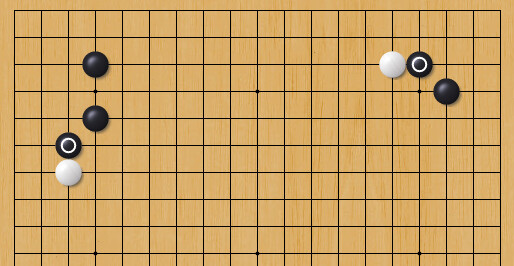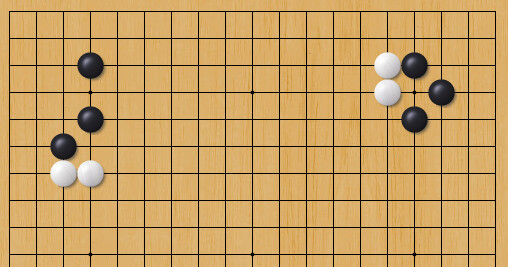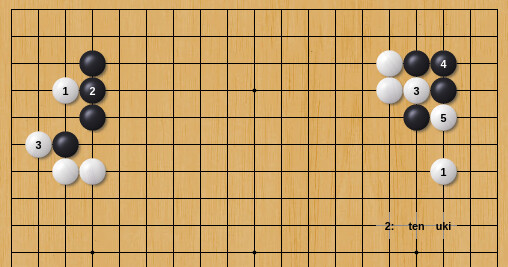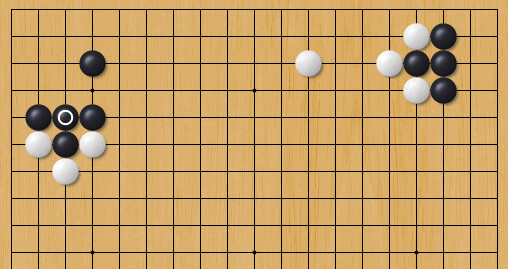You seem to love cutting through a tobi by sacrificing a stone. You did that several times in both of those games.
If you want to cut a tobi and you have to choose between sacrificing a stone on the fifth line or on the third line, it’s almost-always better to sacrifice on the third line.
Offering a ponnuki on the fifth line, oriented towards the center, is rarely a good idea.
Offering a ponnuki on the third line, and surrounding it with a wall on the fifth line, is often okay.
Also, this move doesn’t work:
Your opponent can make sure that you can’t connect your groups if they play this way:
But you don’t even need to read that far to realise that playing inside White’s tobi like this is bad. After two moves you get this shape:
The four black stones marked with triangles form an empty triangle, a very inefficient shape. The two black stones marked with squares are isolated and surrounded by white stones.
Look at the whole board. Black has played a lot of nobi, resulting in thick and heavy groups. White has not played a single nobi. resulting in light and fast moves.
Try to avoid:
- empty triangle, especially this early in the game;
- too many nobi;
- the kosumi-tsuke.
The kosumi-tsuke is this shape:

After a kosumi-tsuke, there are two alternatives.
Alternative 1: your opponent extends up with a nobi. As a result, your opponent is a lot stronger than before the tsuke, but you still have weaknesses.

Alternative 1 after kosumi-tsuke: opponent extends up.
Here is one way that White can exploit Black’s weaknesses after Alternative 1. This is not necessarily the best way, just one example.

White exploits the weaknesses after kosumi-tsuke alternative 1
Alternative 2: your opponent plays hane and atari. As a result, you have a very thick and heavy shape, while your opponent has a very light shape. This is what happened in the game.

Alternative 2: the game.
Note that kosumi-tsuke is not necessarily a bad move. But you play it a lot and always end up with the same shapes. I suggest trying to be more imaginative and play more varied moves, and avoiding the kosumi-tsuke can be a first step towards that goal.
![]()






